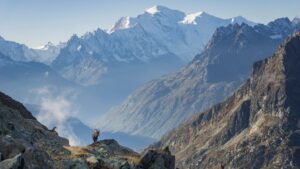Abstract/Description
The impact of a warming climate on snow avalanche hazards varies by region and season, influenced by factors such as the timing and intensity of rainfall on alpine snowpacks. For instance, winter rain on unconsolidated snow creates more complex hazards than spring rain on a consolidated snowpack. Snow avalanche flow dynamics are primarily driven by temperature and water content of the released and eroded snowpack.
Aotearoa New Zealand (NZ), characterized by a maritime climate, frequently experiences large rain events (>100 mm) falling to high elevations. The Southern Alps experience steep precipitation and temperature gradients, resulting in large avalanches that often release as cold powder avalanches in the high alpine and rapidly transition into warm, wet flows as they descend to valley floors. Limited meteorological and avalanche observational data in NZ have so far constrained our understanding of how climate change influences avalanche flow regimes.
This study provides the first detailed insights into NZ’s avalanche flow regimes from naturally occurring events. Over four seasons, we inventoried 250 avalanches across nine paths in the Hooker Valley, Aoraki Mount Cook National Park, using a time-lapse camera network and meteorological data. We focused on 197 events (79% of total) from two adjacent paths with similar slope gradients and aspects. These paths reach to just over 2,300 m and descend directly into a paraglacial lake at 870 m.
Time-lapse observations reveal that while avalanches often initiate as storm or wind slabs, they quickly transition into warm, wet flows, frequently traveling below the snowline over bare ground or old debris before terminating in the lake. Sediment and rock entrainment further increases flow density and slows velocity. Although springtime rain reaching high elevations is common in NZ, frequent mid-winter intense rainfall events have been observed to occur in the release zones, creating complex release and flow dynamics.
NZ’s avalanche patterns provide valuable insights for other regions globally, where warm and wet avalanche cycles are increasingly observed in mid-winter. Understanding these shifting flow regimes is crucial for future hazard mitigation, including updates to hazard management plans and infrastructure design to accommodate denser, more dynamic avalanche conditions.


